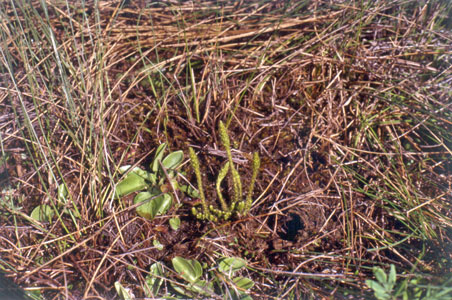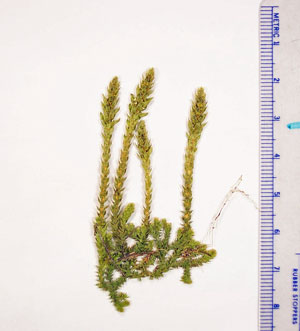DACF Home → Bureaus & Programs → Maine Natural Areas Program → Communities, Plants, and Animals → Rare Plants → Selaginella selaginoides

Selaginella selaginoides (L.) Beauv. ex Mart. & Schrank
Low Spike-moss
- State Rank: S1
- Global Rank: G5
- State Status: Threatened
Habitat: Damp shores, mossy banks, etc. [Open wetland, not coastal nor rivershore (non-forested, wetland); Non-tidal rivershore (non-forested, seasonally wet)]
Range: Circumboreal, south to Nova Scotia, and northern Michigan and Minnesota.
Aids to Identification: Spike-mosses are inconspicuous, spore-bearing, vascular plants related to the clubmosses (Lycopodiaceae). They resemble mosses that are frequently overlooked. This evergreen herb can be distinguished from other spikemosses by its spirally arranged 10-ranked leaves, which are thin, toothed, and lacking bristle-tips. The fertile erect stems usually grow to 6-10 cm, and the sterile prostrate stems grow to 2-5 cm.

Ecological characteristics: The occurrences of this species in Maine are associated with circumneutral fens, and it is the only spikemoss or clubmoss that grows in circumneutral fens.
Phenology: Fruits July - August.
Family: Selaginellaceae
Synonyms: Lycopodium selaginoides L.; Selaginella spinosa P. Beauv.
Known Distribution in Maine: This rare plant has been documented from a total of 6 town(s) in the following county(ies): Aroostook, Penobscot, Piscataquis.
Reason(s) for rarity: At southern limit of range; habitat naturally scarce.
Conservation considerations: Maintain hydrologic integrity of its open fen habitat.